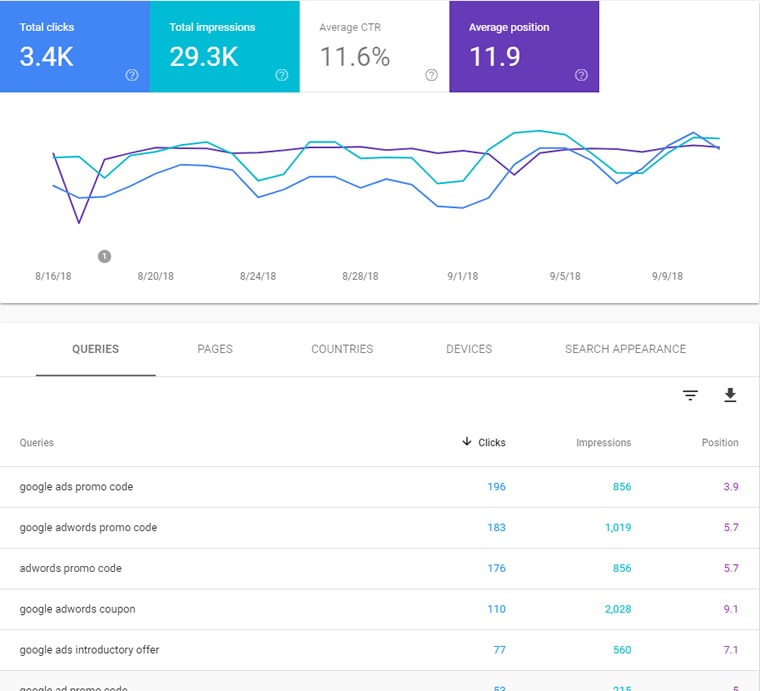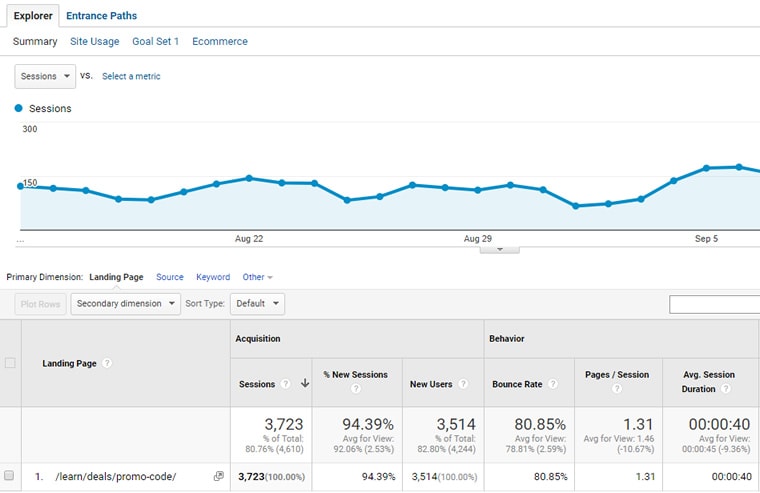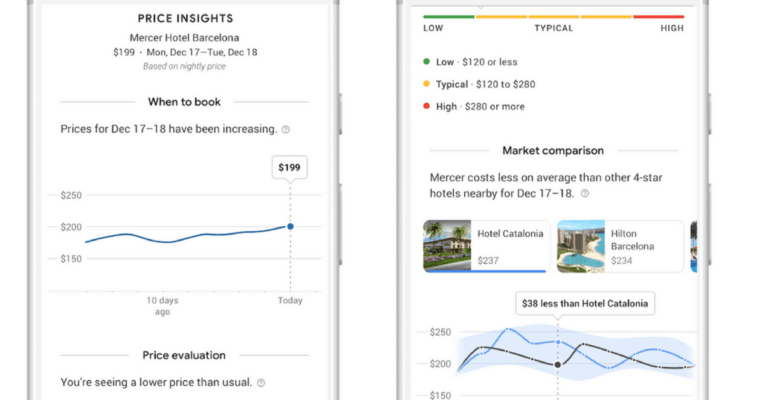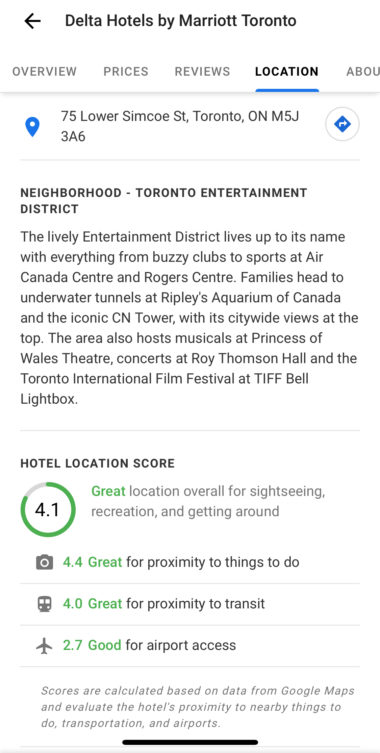For anyone who’s been involved in SEO for longer than a few months, you’ll know that you’re dealing with a rapidly changing environment.
Not only are we dealing with algorithms that change daily but it’s compounded with SERP layout changes and often dramatic shifts in device usage.
You’re hopefully already well-underway with your holiday SEO efforts for 2018, but SEO in 2019 and beyond is going to be very different than the Google you’re optimizing for today.
As we mentioned above, there are three core areas of change we need to keep our eyes on:
- Algorithms
- SERP layouts
- Devices
So, let’s look at them one-by-one and what you need to be thinking of as you prep for the holidays, which are just 15 short months away.
Algorithms In 2019
If there is a constant in SEO, it’s change.
Constant change.

Google updates their algorithms on an almost daily basis and with machine learning, this is sure to accelerate with the barrier to change and testing dropped to near-zero.
Without a doubt, the focus of algorithmic change as we head toward the holidays will be to fulfilling user intent.
What does this means for us?
The primary signals will continue their shift away from those we traditionally consider critical, like having your keywords in the title tag, backlinks, content length, etc.
This is not to say they will be unimportant. Just less important.
Areas to keep your eyes on in your prep for the 2019 holiday season are:
Post-Click Time & Subsequent Action(s)
Whether a user spends a day at your page or 5 seconds is irrelevant for determining if their intent was met. What matters is whether the next action they took at Google implied their intent being fulfilled or not.
If they return to Google in 5 seconds and click the next results they are likely unsatisfied, if they return and change their query they likely found what they wanted or determined the query was incorrect.
What happens post-click is (according to Google) not currently a signal for an individual site but is used to determine overall search result quality.
I can all but guarantee that as we approach the holidays in 2019 and beyond we’ll be discussing this very differently.
I feel confident in this assertion based on the increasing prevalence of machine learning in the algorithm and its ability to generate its own signals.
I don’t believe that presently many, if any, search algorithms are left to define and weight their own signals, but this will change and using post-click information just make sense.
In fact, if I were the machine learning algorithm, I’d complain enormously if you tied my hands on this set of possible metrics while directing me to create the best set of search results.
What you can do about it is ensure that you are accurately predicting the user’s likely intent:
- Review the phrases that are driving people to specific key pages within your site.
- Consider what the user should want when they get there based on the variety of phrases.
- Then look at your analytics to determine if the signals match.
For example, we have a page on our site where we give away Google Ads Promo codes each month.
The queries driving traffic to the page are:

And here’s what the traffic is doing:

On most other pages on our site having a bounce rate of 80.85 percent and 1.31 average pages per session would be a horrible signal.
On this page, however, people are supposed to come, copy a code or see that it doesn’t apply to them, and leave.
The signals for this page are exactly what they should be.
While our rankings fluctuate a bit by region, they have held steady and traffic has improved over time as we capture more terms.
In fact, if I saw a high number of pages per session for this term I would have to consider what I’ve been doing wrong or what unexpected next action people are taking.
Essentially, what I’m considering is whether my analytics match what I’d expect if the user’s intent was met for the terms driving them to the page. This will allow me to assess what the next likely action they have taken is.
In the case above, they would likely adjust their term to include their region if it is not one we give our codes for or head over to Google Ads to use it and move on.
Probability of Content to Fulfill User Intent

Post-click signals are great to let you get a feel for how your currently ranking content is doing – but what about content that isn’t ranking or is in development?
Google’s goal is to satisfy their user’s intent and as such want to maximize the probability that a piece of content will do that.
With a term like “buy blue widgets” it’s fairly straightforward. The searcher clearly wants to purchase a product. The goal then is to provide all the information that they may need to make the decision to buy it from you.
It gets more complicated when you’re striving to rank for terms like “blue widgets”.
The searcher may want to purchase some, may want to know the history of the blue widget manufacturing industry, or may want to know why blue widgets are constantly used as an example in SEO circles.
Different users may also desire different content formats and the larger the variety of phrases a page may capture, the more variables there are.
The goal is not to destroy the user experience by trying to fulfill every possible intent for every possible type of user, but rather to satisfy the likely intent for a larger group of searchers than your competitors.
As you ready your site and develop your content strategy for the holidays you want to make sure that you’re maximizing the likelihood of satisfying not just your purchasers but other searchers who would use the same terms.
Reputation & Relatedness
If you think links are important you’re just getting warmed up.
As I discussed in my article on machine learning in search, entities are the future of search.
Everything you can think of (including that thought) is an entity.
Entities will someday replace links (though links will assist in defining and strengthening relationships between them). What I’m referring to here as reputation could also be referred to as strength.
With entities, we pull away from the idea of PageRank yielding weight and instead would consider relatedness combined with reputation.
The more references that tie one entity to another (like tying the author “dave davies” to the topic “seo”) and the stronger the references, the more likely “dave davies” will be considered an authority on the topic of “seo”.
In this paragraph I have, without links, strengthened that relationship and the fact that this reference is on Search Engine Journal, a site that also has a strong relatedness to the entity “seo” and a strong reputation makes it even more valuable
There is a link in the bio, that will also reinforce the relatedness, but only of the entity “dave davies” to the site “Search Engine Journal” assisting my reputation.
The relatedness factors are a lot more complex and involve the relatedness of page, content, and entities being connected.
So, as you prepare for the holidays, yes you want to build some links but more, you need to consider how you are tying the entity that is your site to the entity that is your core offering, whatever that may be.
Often this will involve mentions within relevant content, links from relevant sites and even connections with other relevant authors and entities.
This might sound a lot like link building, but the strategies will be tweaked and some completely new or for completely different reasons.
Why would you have someone write for your site?
If the entity “loren baker” wrote a post on the entity that is “beanstalk’s website” I strongly suspect that in optimizing for the algorithms of the 2019 holiday season, provided I can reinforce that the piece was indeed written by this Loren Baker, that the content would rank higher than if I wrote the same piece as the entity that is him is more strongly associated with the terms that would rank.
Additionally, you will want the entity that is your company to be tied to related entities as the holidays approach.
If you sell blue widgets you want to also be associated with their various uses, history, etc. In this case, it doesn’t have to be the entity that is “you” but simply one associated with the entity that is “your company”.
Each staff may specialize in an area related to blue widgets, and all staff will be associated with your company, thus passing that overall weight to your company. However, if one wrote about the topic of another, the relevance passed would likely not be as strong. Like me writing about the entity that is “email marketing”.
So, think of creative ways to get your entities associated correctly. Invite other entities to your playground and try to get invited to theirs.
It won’t just be about the link so don’t get pre-occupied, it will be about the topics you get associated with and how strongly.
SERP Layouts

It’s tough to predict what the SERPs will look like in 15 months.
What we know with 100 percent certainty is that they will be very different and that some sectors will change more than others.
If you’re in travel, for example, you can be sure that Google will have completely changed how they lay out the results and how users search.
Just a couple weeks ago, SEJ’s Matt Southern reported on the addition of pricing insights for hotels and flight searches:

A couple weeks before that it was adding location scores:

And so on.
Basically, they’ve been launching major layout changes every week or two so one can readily assume that they SERP layout heading into the holidays of 2019 will be very different for travel sites.
And that’s just the tip of the iceberg. In just the past few months we’ve seen:
This is literally just scratching the surface of what’s happened over the past couple of months.
As we ready ourselves for the holidays, it is going to be critically important for all website owners to pay very close attention to changes in these layouts to consider how they will impact you and how you can take advantage of them.
On top of that, even if you don’t invest in Google or Bing Ads you need to pay attention to changes there. Different layouts and structures in the paid space often lead to changes in the layouts.
If there are new headlines and increased click-throughs in paid, that’s bad news for your organic side.
But if you want to be optimistic – consider how their structure appears on a page and that they’ve put considerable time and money into testing which layouts get clicked the most often. Perhaps take some inspiration from what they’re doing.
Regardless of what changes you see you need to stop and think. Don’t just think about what they’re doing and don’t even just think about how you can take advantage of it – think about why.
Think about what is being lost or gained and consider whether they might push it further and start preparing for that.
There will be hundreds of SERP layout changes between now and the holidays. No matter how small be sure to pay attention and as things start to stack up you’ll have a very good idea of the direction things are heading and what to do about it.
Changing Devices

How people are accessing data is changing rapidly.
To give you an idea, when you were preparing for the holidays in 2016 you were dealing with an environment where only about 25 percent of people would use voice search in an office if people were around.
By the holidays of 2017, that number rose to over 30 percent.
With that increase came staggering growth in the number of voice-first devices which climbed from roughly 7.9 million to more than 23 million.
By the holidays of 2018, there will be an estimated 50 million and something to keep in mind as you prepare for the holidays of 2019… by then there will be an estimated 89 million.
On top of that, the way people interact with their devices has changed dramatically with “near me” replacing location-specific queries and these types of user-driven changes, combined with Google tweaking mobile layouts and how and what data is presented – the process by which user find and purchase their products will be significantly different.
As with changing SERP layouts, the goal in this area is mainly reactive.
You should make sure that key content on your site is formatted to provide voice results to common user questions when they ask “what is the world record for eating blue widgets?”
So look to Schema and content structures that capture featured snippets.
Loren Baker’s advice in 5 Voice Engine Optimization Strategies to Get Ahead is a good starting point.
In prep for the holidays, you’ll need to read constantly and keep up on the changing landscape and who are changing with it.
Read the studies by Stone Temple and others like it where they reveal data like:

Revealing that higher income people use voice search at a higher degree in most environments. Or:

Lending insight into what environments people tend to use voice search and thus help us predict how we can inject our content into their lives.
Run a grocery store with fast delivery? People use voice search when their hands are dirty so make it convenient for them to quickly order a product for delivery through your app or mobile site while they’re up to their elbows in a recipe they’re working on for Thanksgiving dinner and realized they forgot an ingredient.
It’s Time to Start Now
The 2019 holidays are just 15 short months away.
Many of the tasks you need to accomplish will take time.
You’ll need to:
- Adjust your link strategy to an entity strategy.
- Review (and potentially rework) your content for voice search.
- Keep up with SERP layout changes and the opportunities they will provide.
This is going to be exhausting – and incredibly rewarding.
Get started now and you won’t just stand a chance, but you’ll be ahead of many.
And THAT will make for some very happy holidays.
More SEO Resources:
Image Credits
Featured Image: Adobe Stock modified by author, September 2018
In-post Photo #1, 5, 8: Adobe Stock, modified by author, September 2018
In-post Photos #2-3: Screenshots taken by author (via Search Console & Analytics), September 2018
In-post Photo #4: Adobe Stock
In-post Photo #6: Google
In-post Photo #7: Screenshot taken by Matt Southern, August 2018
In-Post Photo #9-10: Stone Temple
Subscribe to SEJ
Get our daily newsletter from SEJ’s Founder Loren Baker about the latest news in the industry!
